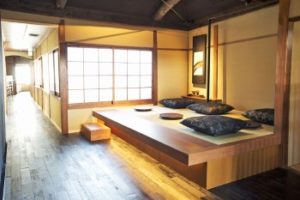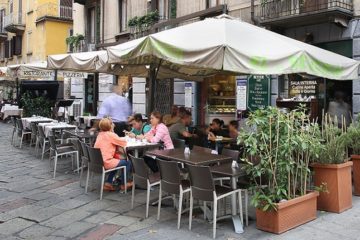Merging Historical Culture with Starbucks in Japan
 I wrote about how Starbucks was trying something new in Japan, ‘Neighborhood and Coffee’ stores which had less obvious Starbucks branding, and were more focused on becoming the local neighbourhood coffee shop. Now, again in Japan, the company is trying something new.
I wrote about how Starbucks was trying something new in Japan, ‘Neighborhood and Coffee’ stores which had less obvious Starbucks branding, and were more focused on becoming the local neighbourhood coffee shop. Now, again in Japan, the company is trying something new.
Its latest outlet in Kyoto, opened on 30th June, is inside a 100 year-old Japanese townhouse, complete with traditional garden. The building is located near Ninenzaka which is a popular tourist street in the city, famous for its traditional buildings and shops. But it’s not just the building itself which is the novel aspect of this Starbucks store. It is the first coffee shop outlet with tatami rooms, and is traditionally decorated. A number of articles about the store suggest that customers will have to take their shoes off before entering these rooms, as is custom in Japan.
It is interesting that Starbucks are trying out different store formats in Japan, a country where the brand is very popular, particularly with young urban consumers. Starbucks is known for adjusting their menu and even some extent their store design to different countries – you’ll already find matcha lattes and cherry blossom Frappuccino’s in Japan. Is this an attempt by Starbucks to cater for the local population of Kyoto by providing a glocalised example of its store – by creating a building that will blend into the landscape and incorporate traditional features?
Starbucks is known for adjusting their menu and even some extent their store design to different countries – you’ll already find matcha lattes and cherry blossom Frappuccino’s in Japan. Is this an attempt by Starbucks to cater for the local population of Kyoto by providing a glocalised example of its store – by creating a building that will blend into the landscape and incorporate traditional features?
“Starbucks is attempting to create a mixture of new cafe culture and historical and traditional Japanese townhouse culture and architecture.” JapanInfo
Given this store’s proximity to a very popular tourist site it’s more likely they are thinking that there is money to be made from tourists seeking an ‘authentic Japanese experience’ while also wanting some comfort from their familiar brand. The Japan Times highlighted how Starbucks Japan have said it ‘will not allow people to form lines in front of the shop and will also restrict the number of customers during peak hours to avoid disrupting the quiet atmosphere of the area’. Clearly they are expecting the store to be popular with the tourist market – is this a new way for Starbucks to continue expansion into cities, by creating alternative stores to provide a more novel coffee experience?



